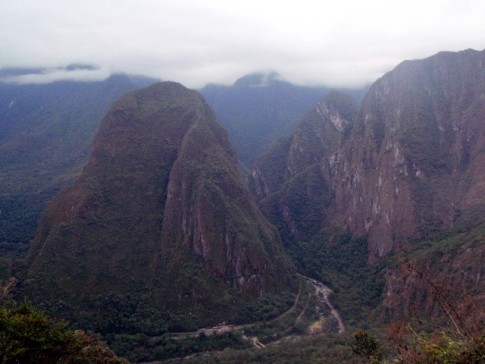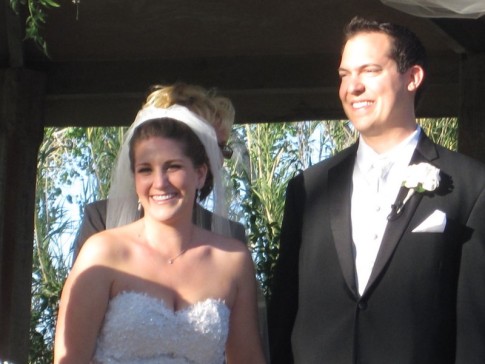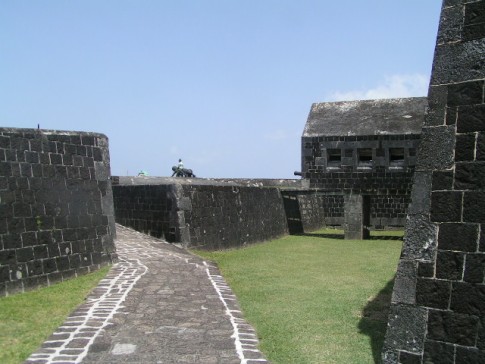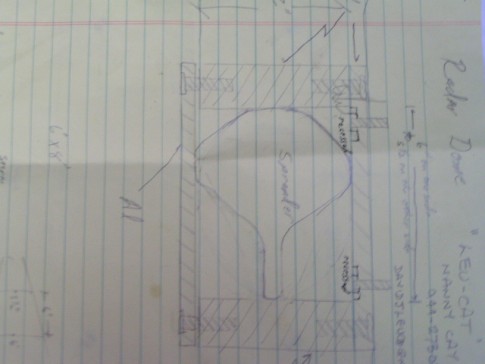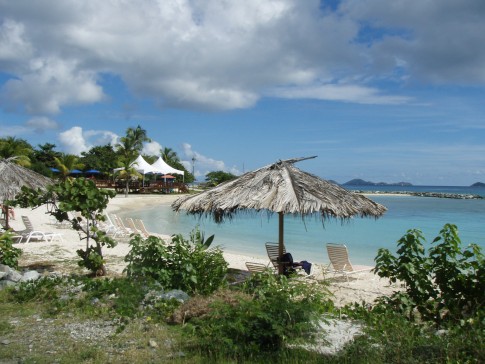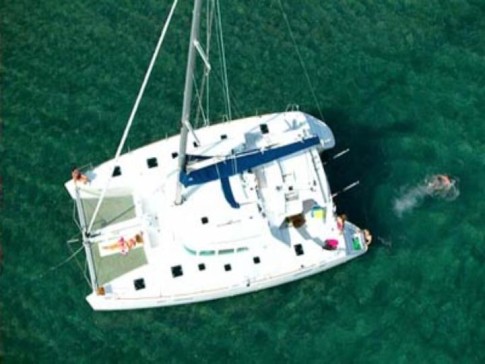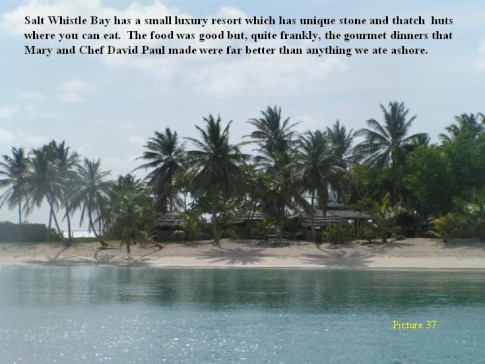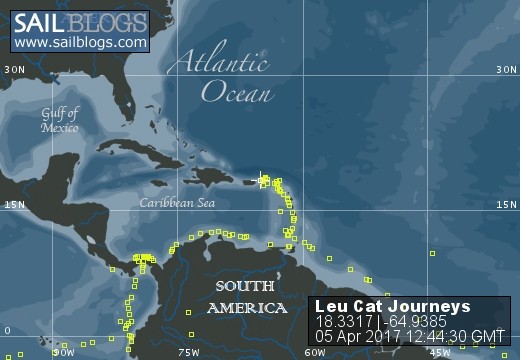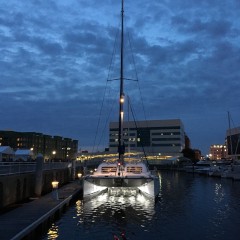
LeuCat Adventures
Join us in sharing our adventures as we sail around the world. NEW!!************************************************************************* GET A COPY OF OUR TECHNO-TIPS DOCUMENTS--JUST CLICK ON THEM UNDER THE "FAVORITES" HEADING ON THE RIGHT
24 September 2017
30 August 2017 | San Francisco, CA
07 July 2017
02 July 2017 | Simpson Bay Marina, Cole Bay, Sint Maarten
01 July 2017 | Simpson Bay Marina, Cole Bay, Sint Maarten
30 June 2017 | Simpson Bay Marina, Cole Bay, Sint Maarten
29 June 2017 | Simpson Bay Marina, Cole Bay, Sint Maarten
28 June 2017 | Simpson Bay Marina, Cole Bay, Sint Maarten
27 June 2017 | Simpson Bay Marina, Cole Bay, Sint Maarten
26 June 2017 | Simpson Bay Marina, Cole Bay, Sint Maarten
25 June 2017 | Simpson Bay Marina, Cole Bay, Sint Maarten
24 June 2017
24 June 2017 | Simpson Bay Marina, Cole Bay, Sint Maarten
22 June 2017 | Simpson Bay Marina, Cole Bay, Sint Maarten
21 June 2017 | Simpson Bay Marina, Cole Bay, Sint Maarten
20 June 2017 | Simpson Bay Marina, Cole Bay, Sint Maarten
18 June 2017 | Simpson Bay Marina, Cole Bay, Sint Maarten
17 June 2017 | Simpson Bay Marina, Cole Bay, Sint Maarten
16 June 2017 | Simpson Bay Marina, Cole Bay, Sint Maarten
15 June 2017 | Simpson Bay Marina, Cole Bay, Sint Maarten
Year 5 Day 24: A Brief History Of Australia- Part 2
24 February 2012 | Bundaberg Port Marina, AU
Dave/Overcast With Threats Of Raining
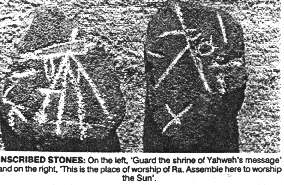
The weather today was the same as yesterday: blustery and threats of rain. Due the weather, not much happened on Leu Cat. Thus, I am continuing with my brief write up on the history of Australia.
The Discovery Of Australia
Based on the readings that I have done, the “discovery” of Australia is highly disputed. However, this is generally true for any lands as politics and “pride” seem to dim the eyes of the historian that is doing the research and writing. I have read works of various historians that claim the Phoenicians first came to Australia and passed on to the aborigines many of their religious customs and tools. A web site (http://www.awarenessquest.com/AAA/research.htm ) shows a photo of a group of seventeen granite stones that were found in Toowoomba with Phoenician inscriptions. One had been translated to read "Guard the shrine of Yahweh’s message" and "Gods of Gods". Another inscription reads, "This is a place of worship of Ra" and "Assemble here to worship the sun." (Ra was the Egyptian sun god). I will post a copy of this photo to this blog.
Others have claimed that the Greeks as early as 350 BC and the Romans around 50 AD were well aware of the existence of Australia as shown in the maps they were making in those respective periods. The map that I will post above this blog was drawn by the Roman geographer Pomponius Mela in 50 AD and it identifies a southern continent which he called Antichthones. A manuscript fragment by an unknown Roman writer of the same period describes animals with pouches in which their young were carried. Based on a “leap of faith” one supposedly can draw the conclusion that Antichthones is Australia.
In Gavin Menzies’ book “1421: The Year China Discovered the World”, he writes about the great fleet of ships that the Zhu Di's dynasty sent around the world. The fleet divided into 4 groups with each group of ships exploring different parts of the world. One of the admirals, Zhou Man, landed a party near Newcastle, on the Western coast of Australia, where he built a garrison. He then continued south along the coast to Campbell Island, where he lost one of his ships. Later, he also explored the eastern coast of Australia and plotted in some detail the location of the Great Barrier Reef. He also stopped at Gympie to mine for gold.
Most writers of Australian history I have read start their description of the discovery of Australia with a few passing words of the Portuguese and then leap to the Dirk Hartog (Dirck Hatichs), a Dutch who captained the Eendracht. In late October 1616, he came across a string of uninhabited islands beyond which was a vast mainland. He went ashore on one of the islands and high on the cliffs of Cape Inscription at Shark Bay recorded his visit on a flattened pewter plate, which he nailed to a post before sailing away. The translation of the inscription reads: "On the 25th of October there arrived here the ship "den Eendracht" of Amsterdam supercargo Gilles Miebas of Liege; Skipper Dirck Hatichs of Amsterdam. She set sail again for Bantam on 27th do. Sub cargo Jan Stins; Upper steersman Pieter E. Doores of Bil. dated 1616". A replica of the plate is on display at the WA Maritime Museum in Fremantle.
Hartog's plate was found by another Dutch sea captain Willem de Vlamingh on 4th February 1697, who replaced Hartog's plate with one of his own.
Hartog appears to me to be the first noncontroversial, substantiated “discoverer” of Australia. However, both he and Vlamingh only stopped on the continent and did not spend any time here nor any Dutch returned to develop it.
Since the British both “discovered” Australia and then developed it, historians give most of the pages written about its discovery to them. From what I have read, John Brookes, Captain of the English ship Trial became Australia's first recorded shipwreck when it ran onto reefs near the Montebello Islands on 24th May, 1622. Brookes and 45 crew members managed to sail 2 boats to Batavia leaving 93 others behind to perish. The first boat ended up in Java on 8th June, and arrived in Batavia on 25th June. The second boat had set sail for the Montebello Islands, searched for water on arrival, and then turned north for Batavia. After the two vessels reached Batavia, allegations arose that Brookes had stolen items from the Company and had been negligent. Brookes had also seemed to put false entries in his Journal indicating that he had not gone further east of where he had been instructed to go. Brookes’ false entries placed the Trial wreck many kilometers west of the true wreck site and the Trial Rocks were not discovered until some 300 years later. In 1934 Ritchie's Reef was discovered to be the true site where the ship went down.
The renowned English pirate William Dampier on 5 January 1688 beached his ship, Cygnet, on the northwest coast of Australia, near King Sound. While the ship was being careened Dampier made notes on the fauna and flora and the indigenous peoples he found there. Later that year he and two shipmates were marooned on one of the Nicobar Islands. They obtained a small canoe which they modified after first capsizing and then, after surviving a great storm reached Sumatra. After further adventures Dampier returned to England in 1691 via the Cape of Good Hope, penniless but in possession of his journals. He also had as a source of income the famous painted (tattooed) Prince Jeoly and his mother, who he had purchased as slaves and subsequently exhibited in London thereby also coming to be better known while his book was being printed.
Captain James Cook sailed the entire length of the eastern coast in 1770, stopping at Botany Bay on the way. His naturalist, Joseph Banks wrote: “the country rose this morning in gentle sloping hills which have the appearance of the highest fertility, every hill seemed clothed with trees of no mean size”. The landscape around Captain Cook delighted him such that he wrote in his journal: “it can never be doubted that most sorts of grain, fruit, roots etc. would flourish were they once brought hither planted and cultivated, and here are provender for more cattle than can ever be brought into the country”. This part of Australia reminded him of Glamorgan shire and he named it New South Wales.
He slowly worked the Endeavor northward, sailing a thousand miles and making meticulous surveys as he moved on up the coast. However, at 11 PM on 10 June 1770, the Endeavour struck a reef and started taking water. Desperate to lighten the ship, the crew heaved nearly 48 tons of material over the side, including ballast and cannons. Twenty-three hours later, at the next high tide, the Endeavour pulled free. Six weeks were spent repairing the ship at what became known as Endeavour River in northern Queensland. A village called Cooktown is presently at this spot. Endeavour's jettisoned ballast and cannons were found, encased in coral, in 1969.
Using long boats out ahead of the Endeavour, Captain Cook carefully tacked around and through the Great Barrier Reef near Cape York, the northern most tip of Australia. Before sailing away, he held a little ceremony to take formal possession of Australia. The flag was run up onshore to a salute of musketry. Then, with parts of the ships bottom so worn that “they were no thicker than the sole of a shoe”, Captain Cook and the Endeavour limped into Jakarta for refit.
The Discovery Of Australia
Based on the readings that I have done, the “discovery” of Australia is highly disputed. However, this is generally true for any lands as politics and “pride” seem to dim the eyes of the historian that is doing the research and writing. I have read works of various historians that claim the Phoenicians first came to Australia and passed on to the aborigines many of their religious customs and tools. A web site (http://www.awarenessquest.com/AAA/research.htm ) shows a photo of a group of seventeen granite stones that were found in Toowoomba with Phoenician inscriptions. One had been translated to read "Guard the shrine of Yahweh’s message" and "Gods of Gods". Another inscription reads, "This is a place of worship of Ra" and "Assemble here to worship the sun." (Ra was the Egyptian sun god). I will post a copy of this photo to this blog.
Others have claimed that the Greeks as early as 350 BC and the Romans around 50 AD were well aware of the existence of Australia as shown in the maps they were making in those respective periods. The map that I will post above this blog was drawn by the Roman geographer Pomponius Mela in 50 AD and it identifies a southern continent which he called Antichthones. A manuscript fragment by an unknown Roman writer of the same period describes animals with pouches in which their young were carried. Based on a “leap of faith” one supposedly can draw the conclusion that Antichthones is Australia.
In Gavin Menzies’ book “1421: The Year China Discovered the World”, he writes about the great fleet of ships that the Zhu Di's dynasty sent around the world. The fleet divided into 4 groups with each group of ships exploring different parts of the world. One of the admirals, Zhou Man, landed a party near Newcastle, on the Western coast of Australia, where he built a garrison. He then continued south along the coast to Campbell Island, where he lost one of his ships. Later, he also explored the eastern coast of Australia and plotted in some detail the location of the Great Barrier Reef. He also stopped at Gympie to mine for gold.
Most writers of Australian history I have read start their description of the discovery of Australia with a few passing words of the Portuguese and then leap to the Dirk Hartog (Dirck Hatichs), a Dutch who captained the Eendracht. In late October 1616, he came across a string of uninhabited islands beyond which was a vast mainland. He went ashore on one of the islands and high on the cliffs of Cape Inscription at Shark Bay recorded his visit on a flattened pewter plate, which he nailed to a post before sailing away. The translation of the inscription reads: "On the 25th of October there arrived here the ship "den Eendracht" of Amsterdam supercargo Gilles Miebas of Liege; Skipper Dirck Hatichs of Amsterdam. She set sail again for Bantam on 27th do. Sub cargo Jan Stins; Upper steersman Pieter E. Doores of Bil. dated 1616". A replica of the plate is on display at the WA Maritime Museum in Fremantle.
Hartog's plate was found by another Dutch sea captain Willem de Vlamingh on 4th February 1697, who replaced Hartog's plate with one of his own.
Hartog appears to me to be the first noncontroversial, substantiated “discoverer” of Australia. However, both he and Vlamingh only stopped on the continent and did not spend any time here nor any Dutch returned to develop it.
Since the British both “discovered” Australia and then developed it, historians give most of the pages written about its discovery to them. From what I have read, John Brookes, Captain of the English ship Trial became Australia's first recorded shipwreck when it ran onto reefs near the Montebello Islands on 24th May, 1622. Brookes and 45 crew members managed to sail 2 boats to Batavia leaving 93 others behind to perish. The first boat ended up in Java on 8th June, and arrived in Batavia on 25th June. The second boat had set sail for the Montebello Islands, searched for water on arrival, and then turned north for Batavia. After the two vessels reached Batavia, allegations arose that Brookes had stolen items from the Company and had been negligent. Brookes had also seemed to put false entries in his Journal indicating that he had not gone further east of where he had been instructed to go. Brookes’ false entries placed the Trial wreck many kilometers west of the true wreck site and the Trial Rocks were not discovered until some 300 years later. In 1934 Ritchie's Reef was discovered to be the true site where the ship went down.
The renowned English pirate William Dampier on 5 January 1688 beached his ship, Cygnet, on the northwest coast of Australia, near King Sound. While the ship was being careened Dampier made notes on the fauna and flora and the indigenous peoples he found there. Later that year he and two shipmates were marooned on one of the Nicobar Islands. They obtained a small canoe which they modified after first capsizing and then, after surviving a great storm reached Sumatra. After further adventures Dampier returned to England in 1691 via the Cape of Good Hope, penniless but in possession of his journals. He also had as a source of income the famous painted (tattooed) Prince Jeoly and his mother, who he had purchased as slaves and subsequently exhibited in London thereby also coming to be better known while his book was being printed.
Captain James Cook sailed the entire length of the eastern coast in 1770, stopping at Botany Bay on the way. His naturalist, Joseph Banks wrote: “the country rose this morning in gentle sloping hills which have the appearance of the highest fertility, every hill seemed clothed with trees of no mean size”. The landscape around Captain Cook delighted him such that he wrote in his journal: “it can never be doubted that most sorts of grain, fruit, roots etc. would flourish were they once brought hither planted and cultivated, and here are provender for more cattle than can ever be brought into the country”. This part of Australia reminded him of Glamorgan shire and he named it New South Wales.
He slowly worked the Endeavor northward, sailing a thousand miles and making meticulous surveys as he moved on up the coast. However, at 11 PM on 10 June 1770, the Endeavour struck a reef and started taking water. Desperate to lighten the ship, the crew heaved nearly 48 tons of material over the side, including ballast and cannons. Twenty-three hours later, at the next high tide, the Endeavour pulled free. Six weeks were spent repairing the ship at what became known as Endeavour River in northern Queensland. A village called Cooktown is presently at this spot. Endeavour's jettisoned ballast and cannons were found, encased in coral, in 1969.
Using long boats out ahead of the Endeavour, Captain Cook carefully tacked around and through the Great Barrier Reef near Cape York, the northern most tip of Australia. Before sailing away, he held a little ceremony to take formal possession of Australia. The flag was run up onshore to a salute of musketry. Then, with parts of the ships bottom so worn that “they were no thicker than the sole of a shoe”, Captain Cook and the Endeavour limped into Jakarta for refit.
Comments
| Vessel Name: | Leu Cat |
| Vessel Make/Model: | Lagoon 440 |
| Hailing Port: | Dana Point, CA |
| Crew: | Mary Margaret and Dave Leu |
| About: | Our goals are to spend the next 10 to 15 years cruising around the world and sharing this adventure with family and friends. |
| Extra: | S/V Leu Cat is Lagoon 440 rigged for blue water sailing. It is 44 feet long with a 25 foot beam |
| Social: |
Leu Cat's Photos - (Main)
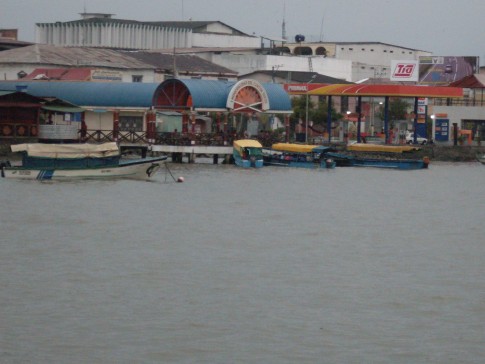 |
Here are some pics that I took while visiting w/ my parents in the Galapagos Islands
22 Photos
Created 29 March 2010
|
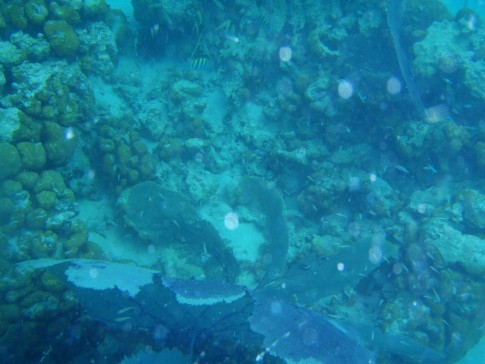 |
Pictures of the sea life in the cut between Little Jost Van Dyke and Green Cay, BVI
30 Photos
Created 17 March 2008
|
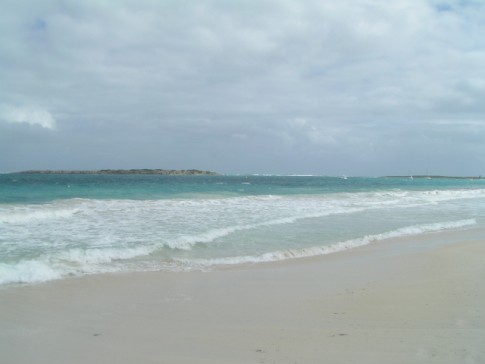 |
Here are a number of pictures of St. Maarten and the places we visited
36 Photos
Created 21 January 2008
|
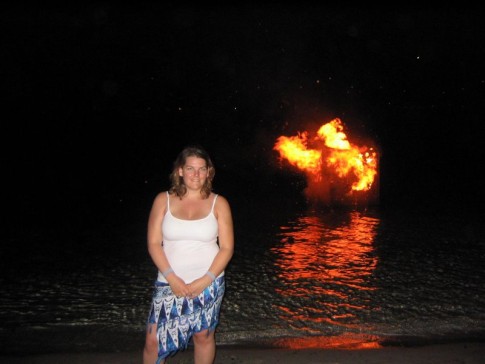 |
Join us as we explore the Spanish, American, and British Virgin Ilsands.
15 Photos
Created 20 October 2007
|
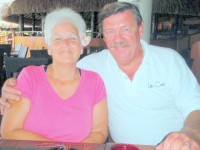
Who: Mary Margaret and Dave Leu
Port: Dana Point, CA
Table of Contents
Favorites
- Get A Copy Of Our Techno Tips Document
- Galley Tips For Cruisers
- Land Travel Tips For Cruisers
- Get A Copy Of Our Yanmar Drive Cone Repair Manual
- Updated Pirate Report
- My Bother Don's and Debbie's Blog
- A Great Sailing Blog
- A remarkable Sail Blog
- Celestial Navigation
- Here is Another Great Sailing Blog
- S/V Totem's Sail Blog
- S/V Infini's Blog Site


